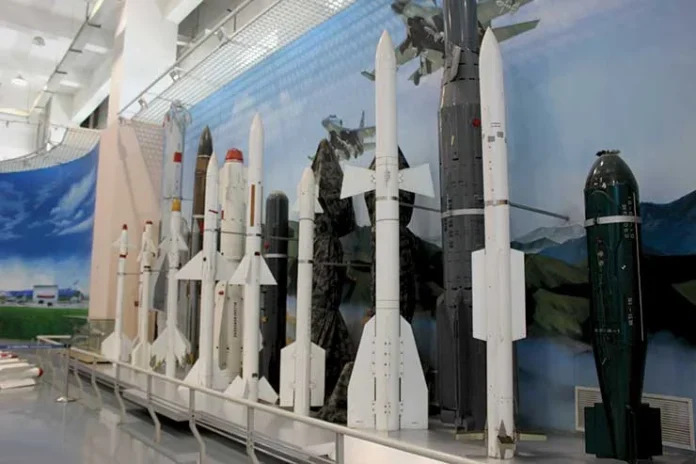On the afternoon of December 12, 1971, at the peak of the India-Pakistan War, two Lockheed F-104 Starfighters of the Pakistan Air Force crossed the Gujarat border on their way to attack the forward airbase at Jamnagar. Indian Air Force radar units detected the intruders and scrambled a couple of MiG-21 interceptors to deal with the threat. As the first Pakistani aircraft dived in towards the airfield, a patrolling MiG-21 pilot spotted the attacking aircraft and got after him. The second MiG-21 went after the wingman. Realising he was up against a much superior aircraft, he made his escape back into Pakistan.
His captain, however, wasn’t so lucky. Observing the MiG on his tail, the Pakistani F-104 broke off the attack, turned and tried to shake off its pursuer. However, the Indian pilot pulled the MiG-21 into a tighter turn well inside the enemy plane and launched a Vympel R-3 (NATO codename AA-2) air-to-air missile. It missed.
The Pakistani attempted to get away using sheer speed but realised the MiG-21 was equally fast. The desperate chase now took them over the shark-infested waters of the Arabian Sea. This time, instead of using missiles, the Indian pilot took aim with his cannon and fired a long burst. Flashes on the F-104’s metallic surface indicated a direct hit. Seconds later the American-built aircraft spun out of control and crashed into the sea. The Indian Navy sent a couple of search vessels, but the pilot was never found. At that speed, when a plane impacts water, it is like hitting concrete.
Russia’s tech problem
The dogfight from 1971 illustrated the importance of superior training and weaponry. A warplane is only as good as its air-to-air weapons. While the MiG-21 was without doubt a highly capable aircraft in the right hands, its weakness was the R-3 missile. It was an exact copy of an AIM-9 Sidewinder air-to-air missile that became lodged in a Chinese MiG-17 without exploding. And like all knockoffs, it simply wasn’t as good as the original. There’s a very easy explanation for Russia lagging behind the West in air-to-air missile development.
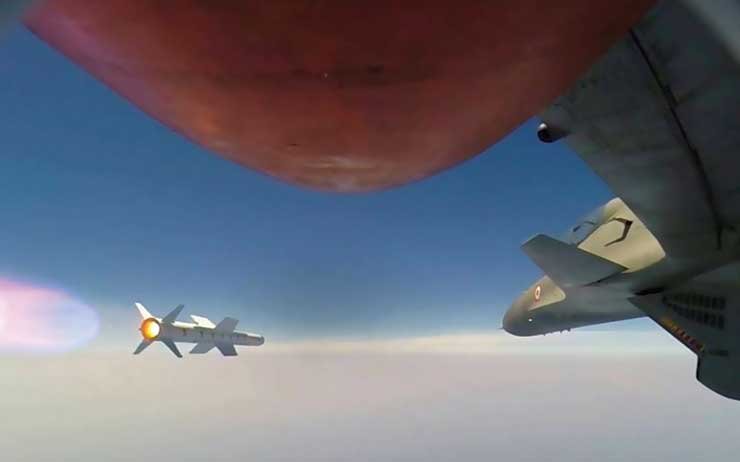
The Soviet armament industry had suffered a 70-year technology embargo which made it difficult for Moscow to acquire microprocessors or computer chips that are at the heart of air-to-air weaponry. It is the quality of the chips that determines the missile’s accuracy. But while other (usually large) missiles can compensate for their lack of accuracy with sheer explosive power or speed, air-to-air missiles are harmless if they are not accurate. Because they have to be slung under the wings of aircraft, and at least four such missiles are needed for an effective engagement, air-to-air missiles have to be small. This is why the Russians were exceptional at building massive ballistic and anti-ship cruise missiles, but lagged behind in air-to-air missiles.
Air to air clashes in the subcontinent
The IAF enjoyed an extended period of air superiority in beyond visual range (BVR) combat with the induction of the MiG-29 Fulcrum in 1985. The value of an excellent dogfighter armed with a long-range weapon was proven in the 1999 Kargil War when the Fulcrum (equipped with the 30 km range R-73 missile) prevented PAF F-16s from coming to the aid of the Pakistan Army which was taking a pounding from the Indian Army and Air Force.
According to a Strategy Page report, “While a number of IAF aircraft took part in the Kargil campaign, it was the cover provided by the MiG-29 Fulcrum armed with BVR missiles that exposed the PAF’s plight. While PAF fighters did fly combat air patrols (CAP) during the conflict, they stayed well within Pakistani air space.” On occasions, IAF MiG-29s armed with the R-73 missiles were able to lock on to PAF F-16s, forcing the latter to disengage. “The Pakistanis had no answer to the 30 km range R-73. In the absence of a PAF threat, the IAF was able to deliver numerous devastating strikes on intruder positions and supply dumps.”
However, the IAF’s BVR edge eroded with the PAF’s acquisition of the AIM-120C Advanced Medium Range Air to Air Missile (AMRAAM). In 2006, Pakistani inked a deal for 500 of these Mach 4 missiles with a range of over 100 km. The AIM-120C incorporates a datalink to guide the missile to a point where its active radar turns on and makes terminal intercept of the target. Once the missile closes in on the target, its active radar guides it to intercept. This feature, known as “fire-and-forget”, frees the aircrew from the need to further provide guidance, enabling the aircrew to aim and fire several missiles simultaneously at multiple targets and break a radar lock after the missile seeker goes active and guide themselves to the targets.
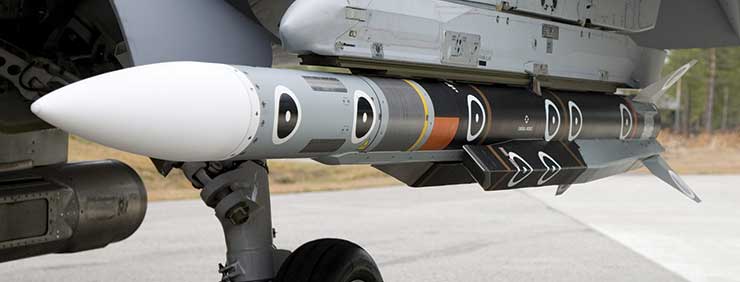
The missile also features the ability to “Home on Jamming”, giving it the ability to switch over from active radar homing to passive homing – homing on jamming signals from the target aircraft. Software on board the missile allows it to detect if it is being jammed, and guide on to its target using the proper guidance system.
The February 2019 dogfight over J&K (which resulted in the loss of a MiG-21 and as yet unconfirmed kill of an F-16) shows that Pakistani pilots who previously did not have the courage to enter the MiG-29’s missile envelope, are now emboldened to take a shot at even the vastly more powerful Sukhoi Su-30 MKI. After the dogfight, IAF sources told leading aviation writer Vishnu Som that the R-77’s range is well below its advertised range of 80 km.
Contrasting acquisition policies
A study of Indian and Pakistani air-to-air missile purchases provides a peek into the contrasting acquisition styles of the two air forces. In early 2006, the PAF ordered 500 AMRAAMs as part of a US$650 million deal to equip its F-16 fighters. This was Pakistan’s payoff for agreeing to join America’s so-called “War on Terror”. The PAF got the first three F-16s on July 3, 2010 and the first batch of AMRAAMs on July 26, 2010. Here’s how the IAF went about getting its most powerful aircraft and the missiles to arm it. India inked a deal to buy the Su-30MKI in 1996, receiving significant numbers of the aircraft starting 2006. However, it was only in 2014-15 that it received 500 R-77 missiles, which have a range of 80 km. To be sure, India didn’t have much of a choice back then as it was treaty bound to order Russian missiles.
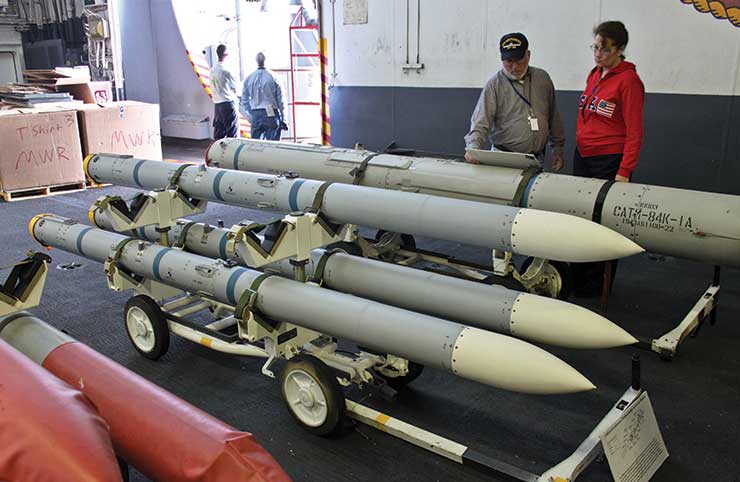
Problems with the R-77
Since Russian air-to-air missiles are not in the same class as the American ones, they are unlikely to achieve a single shot kill. Russian fighter pilots are therefore trained in the practice of attacking targets by firing pairs of missiles with different homing systems. As well as the radar guided version, the R-77 is also offered with a terminal infrared homing seeker.
In theory, attacking targets with different homing systems complicates defensive actions for the target aircraft. If a radar-guided missile is fired at an enemy jet aircraft outside the no-escape attack zone, the target aircraft may be able to escape through emergency manoeuvre. This is when the infrared missile makes its move – once the jet aircraft turns to escape, the engine nozzle is exposed, and the infrared characteristics are exposed.
In practice, no Russian pilot has ever achieved a kill by firing multiple missiles with different homing systems. This is due to the fact that IR seekers typically have less range and less resistance to poor weather than radar seekers, which may limit the successful use of mixed seeker attacks unless the IR missile is initially directed by radar or some other means.
This isn’t to say that Russia is totally outclassed in the air-to-air category. Russia developed long-range, radar-guided air-to-air missiles like the R-33 and R-37, both of which are carried on the MiG-31 Foxhound interceptor and have ranges varying from 150-300 km. But these Russian weapons are bulky and are not carried by smaller fighters, and are primarily meant to shoot down bombers and surveillance aircraft.
An important factor to note is that the Russian defence sector is under Western sanctions since 2015, which makes procuring the latest computer chips a huge headache for Moscow. Being good innovators, the Russians have developed their own microprocessors in-house but these chips are not in the same class as the ones built in the West or Japan. This weakness will continue to impact the Russian defence industry for many years to come.
Chinese threat – PLA’s PL-12
Meanwhile, because of Financial Action Task Force (FATF) sanctions, Pakistan will probably not be able to buy any more AMRAAM missiles for its F-16s. However, a new threat is looming in the shape of the PL-12, a Chinese knockoff of the R-77. According to experts, the BVR missile is a high priority air-to-air weapons programme for China’s military industry. The PL-12 has an operational ceiling of 21 km and a maximum range of 70 km. It has a home-on-jam mode that allows it to passively track and engage an emitting target, without ever using its own active radar or a radar from the launch aircraft.
While currently it is a poor copy of a subpar Russian missile, the Chinese are known for aggressive improvements that can produce a reasonable quality weapon within a few iterations. If they are able to enhance its range and bring the missile to the prototype stage, it won’t take them long to flood the global market with cheap PS-12s.
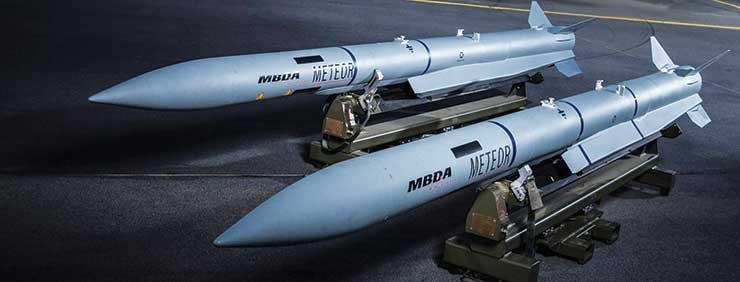
Immediate alternatives
After the J&K dogfight, the IAF has belatedly realised air superiority is not just about having top guns or powerful Sukhois or advanced Rafales. Fighter aircraft are not weapons but weapons platforms, and without long-range missiles and radars, the IAF is under utilising these powerful aircraft that were built for air dominance. The IAF has two simple fixes: one, replace the underperforming R-77s with better imports, and two, develop its own BVR missiles.
LET’s BREAK IT DOWN
- In 2010, the PAF got 500 AMRAAMs, with an over 100 km range, giving it an edge in BVR combat.
- Four years later, India bought an inferior weapon, the R-77 that had 20 km lower range than the AMRAAM.
- Five years later, in February 2019 dogfight, India still had the same old R-77. As a result, the air dominance Su30MKI was forced to go into defensive mode, and was unable to engage the F-16s.
- In 2019, after seeing the performance of the AMRAAM in the J&K dogfight, India imported 400 more R-77s. Whether it is the same old version or the new improved 120-160 km range R-177- RVV-AE-PD is not known yet.
- All things remaining the same, 10 years later the PAF continues to have the BVR edge.
The most likely candidates are the French Meteor and Israeli Derby. First up, the IAF wants to replace some of its R-77s with the I-Derby ER. The Israeli missile has achieved a reputation for reliability as well as being easy to adapt to new aircraft and easier to maintain. Moreover, Derby costs less than the R-77 and American AMRAAM. The extended range variant of the missile, manufactured by Israeli defense contractor Rafael Advanced Defense Systems, has an estimated range of 100 km at Mach 4 (4,900 kph).
The only problem could be from the Russian side. If an Israeli missile is installed on the Su-30 MKI, it would involve handing over secret documentation about the aircraft to the Israelis. Without Russian approval, this would lead to a breach of the co-producer license agreement.
However, according to Strategy Page, India’s purchasing clout can get Russia to give the green light. “Russia can try to enforce the Su-30 purchase agreement, which stipulates Russia must approve the use of any non-Russian equipment on the Russian designed Su-30. India has the economic clout (as a major Russian customer who has a lot of quality and service complaints) to defy the Russians and has increasingly done so. Russia has not been able to improve the quality of their weapons and the level of service that Western manufacturers (like Israel) provide. For example, adapting the Su-30 fire control system to handle Derby is not easy but it is technically possible and the Israelis have a track record of success in dealing with situations like this. This is especially true if they are doing it for a major customer.”
IAF Chief, Air Chief Marshal Rakesh Kumar Singh Bhadauria, had on February 28 last year said that the force is looking at regaining the upper hand in air-to-air missile capabilities that was “allowed to slip” amid a “struggle” to acquire missiles in a process that has lasted 15 years.
The IAF chief was referring to the Meteor which boasts a range of 150 km. However, the missile is meant for exclusive use with the Rafales, and France isn’t keen for it to be mated with the Su-30 MKI. This is understandable as the Meteor represents the acme of French air-to-air missile engineering and they aren’t exactly keen to have the missile be inspected by the Russians as the mating would have to be done by Sukhoi.
This means, the Meteor will be restricted to the Rafale and since India has ordered just 36 of these super expensive fighters, there won’t be enough Rafales to offer combat in all sectors along the borders. So the IAF is basically down to the Derby and the indigenous Astra.
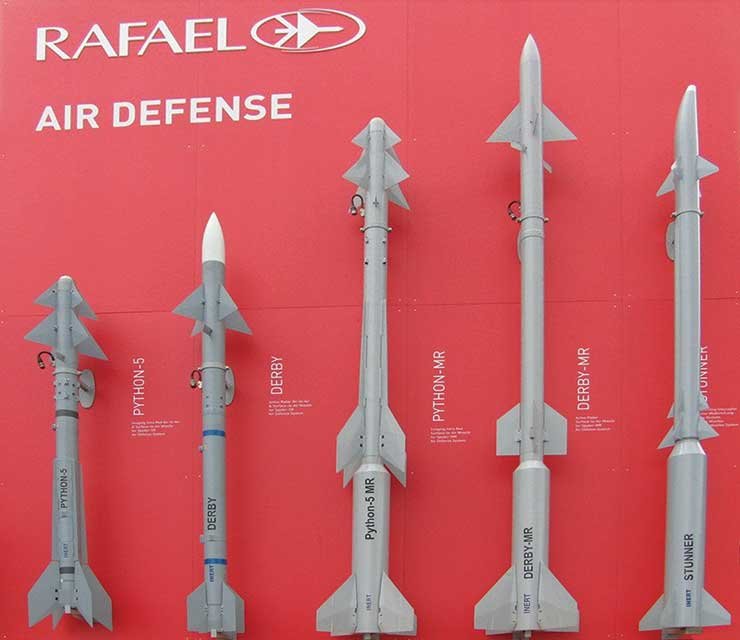
Desi AMRAAM
On September 19, 2019, the first Made in India air-to-air missile, Astra, was flight-tested successfully from a Sukhoi-30 MKI fighter. Developed by the Defence Research and Development Organisation, along with almost 50 other public and private organisations, the missile has a range of nearly 110 km at Mach 4.5 (5,555 kph). On January 13, 2020, the IAF announced: “Astra has been integrated with Sukhoi-30MKI and will be integrated with the Mirage-2000, Tejas and MiG-29 in the future.”
The Astra fills up the critical air-to-air missile gap vis-a-vis Pakistan, which was exposed during the post-Balakot aerial confrontation over J&K. An IAF spokesperson says it is capable of engaging “both short-range targets at a distance of 20 km and long-range targets up to a distance of 80-110 km” at varying altitudes.
While stocking up on potent missiles such as the Meteor and Derby, India should not only keep improving the Astra but also work on further short and long-range variants of the missile. Incremental improvements will ensure the Astra remains a viable option for the IAF. Otherwise, it’ll be back to the old ways of perennially resorting to imported weapons.
–The writer is a globally cited defence analyst. His work has been published by leading think tanks, and quoted extensively in books on diplomacy, counter terrorism, warfare and economic development. The views expressed are personal and do not necessarily reflect the views of Raksha Anirveda
–The writer is a globally cited defence analyst based in New Zealand. The views expressed are of the writer and do not necessarily reflect the views of Raksha Anirveda

